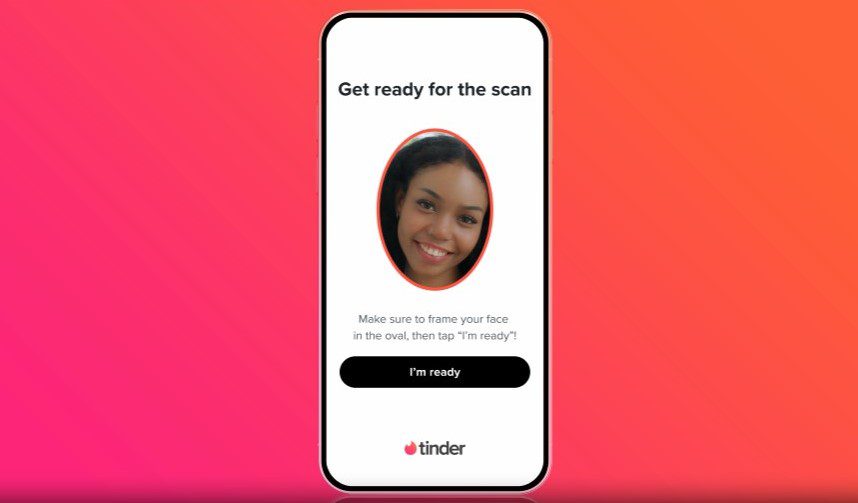Tinder, a popular dating app, has introduced a mandatory facial verification for new users on the platform. The feature, termed “Face Check”, is an attempt to curb the spread of fake profiles and acts of romance scams.
According to a blog post by Tinder on Wednesday, the Face Check feature is the first-of-its-kind facial verification feature that helps confirm users are real and match their profile photos. It noted that this safety innovation is aimed at building greater trust, reducing impersonation and redefining authenticity in dating.
The Head of Trust & Safety at Match Group, Tinder’s parent company, Spencer Rascoff, mentioned that Face Check is the most measurable and impactful Trust and Safety feature he has ever witnessed.
“It helps tackle one of the hardest problems online, knowing whether someone is real, in a way that feels seamless and effective for real users, while adding meaningful obstacles that are difficult for bad actors to circumvent. It sets a new benchmark for trust and safety across the dating industry,” he said.
Tinder has already rolled out the feature in markets such as Colombia, Canada, Australia, India, and several countries in Southeast Asia. With the latest launch in the United States, Tinder plans to roll out “Face Check” globally in markets where local regulations permit.
Tinder is trying to reshape how dating apps should work by integrating next-generation safety innovation to make connections more authentic and secure. The new feature is its attempt to combat “bad actors” and increase romance scams.

The company defines “bad actors” as accounts that engage in deceptive behaviour, including spamming, scamming, and bots. Currently, 98% of the content moderation actions on Tinder address fake accounts, scamming, and spam.
In addition, the “Face Check” feature, in addition to other safety measures on the platform, has recorded over 60% decrease in exposure to potential bad actors. According to the company, it saw more than 40% decrease in bad actor reports and improvement in users’ reported perceptions of authenticity and trust.
“This is a meaningful improvement in our ability to address scaled abuse. You can get new phone numbers, new email addresses, new devices—you can’t really get a new face,” Spencer said.
Previously, verifications on Tinder were voluntary, where users could opt to verify their profiles through a selfie or ID process. Other dating apps also use facial recognition software to let daters verify their authenticity, but voluntarily.
On how it plans to eradicate existing fake profiles, as “Face Check” only applies to new users, Tinder said the technology is the most effective in curbing the issue. In addition, the company stated that the biggest issue now is the bulk creation of new accounts.
Also Read: Romance scam: Nigerian arrested in Argentina for defrauding thousands of women.
Launched in 2012, Tinder is a leading go-to dating platform for connections. The app has been downloaded over 630 million times and has seen over 100 billion matches in 190 countries and 45+ languages.
Tinder’s Face Check: How it works
According to Tinder, its mandatory facial integration feature is a first for a major dating app.


During the sign-up process, new users complete Face Check by taking a short video selfie within the app. The system helps confirm that the person is real and physically present and that their face matches the one shown in their profile photos.
If the scanned face matches a profile photo, members receive Tinder’s Photo Verified badge, signalling to others that they have been authenticated. Face Check also detects when the same face is used across multiple accounts, adding a layer of protection against impersonation and creation of fake profiles.
The procedure collects and stores an encrypted map of information about the shape of the user’s face.
Providing more explanation, Yoel Roth, head of Trust and Safety for Match Group, said the system doesn’t store a picture of users’ faces. He added that it’s not photo recognition, but data points about the shape of users’ faces that are turned into a mathematical hash.
Tinder then uses that “hash” to check whether a new sign-up matches an account that already exists on Tinder.
Another issue is whether the new feature breaches privacy. However, Roth explained that “theoretically, if somebody were to get access to every single one of these hashes that’s been created, there isn’t really anything they could do.”


While tech continues to advance, romance scams continue to rise.
A report by Barclays revealed that during the first quarter of 2025, romance scams were up 20% year-on-year. Scammers now use advanced tactics, including generative AI and deepfakes, to enhance their operations, making it harder for victims to distinguish real relationships from fraudulent schemes.
Meanwhile, Nigeria, on its part, is making moves to sanction perpetrators of romance and online scams. Earlier in October, the Senate considered a bill seeking to amend the Passport Act to impose penalties on Nigerians convicted of crimes abroad, including the withdrawal of their international passports for a minimum of 10 years.








